Bali’s Timeless Architectural Gem Taman Ayun Temple To Explore Its History In 2025
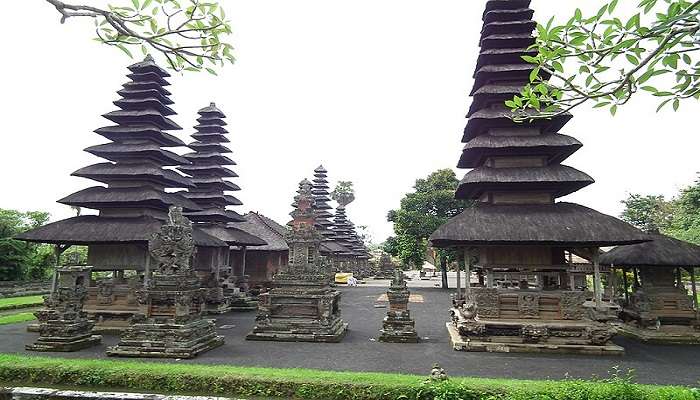
Taman Ayun Temple is located in the heart of Muangwei Village in Bali, making it one of the most visited historical landmarks. What makes this Temple so unique and a must-visit destination in Bali is its beautifully crafted and designed four sections, each with its own history and story. The four sections also make way for peaceful ponds and walkaways on the other side to the sacred Utama Mandala. This Temple is also a UNESCO World Heritage Site, attracting visitors from around the world. This place must be on your bucket list when visiting this charming island.
Revealing The Secrets: Taman Ayun Temple
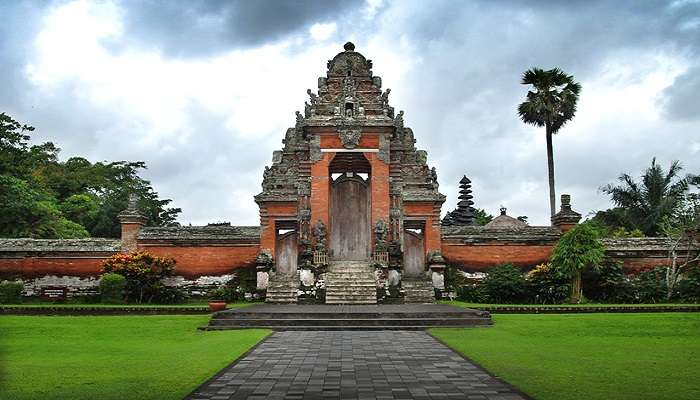
The Taman Ayun temple is in the Mengwi village of Bali’s Badung regency. It consists of four sections, each beautifully and symbolically designed, allowing visitors to see the island’s rich heritage. As you pass through the outer region known as “Jaba”, you will find a landscape of beautiful lakes and paths leading to small and large “wanting” houses where people gather. Further into the complex, the second and third terraces are decorated with inscriptions from the Pura Luhuring Purnama temple complex. These represent the nine Hindu deities that preserve the cardinal’s teachings.
Each part of the this temple complex has deep symbolic and spiritual importance. The wooden clock tower, known locally as ‘Ballet Kulkul’, offers panoramic views of all areas. At the same time, the highest and most sacred courtyard, the Utama Mandala, can only be used during ghost rituals. Symbolizing the three cosmic levels of Balinese Hinduism (the world of men, the land of gods and gods, and the highest level), the temple architecture reflects the ancient text of “Adhiparwa” and the cosmic universe. The name “Taman Ayun”, meaning “beautiful garden”, reflects the tranquillity of the temple, which was a place frequented by palace ladies for entertainment. Nowadays, the temple attracts pilgrims and tourists, offering cultural and spiritual experiences in a tranquil spot, especially during the temple “piodalan” festival.
Must Read: Night Safari In Bali
Taman Ayun Temple Location
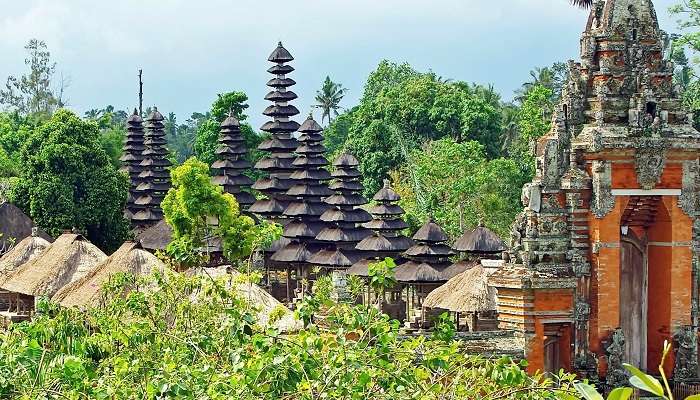
Taman Ayun Temple is situated in the Mengwi village, Mengwi sub-district, Badung Regency, Bali. Approximately 18 kilometres northwest of Denpasar and 8 kilometres southwest of Ubud, This Temple is conveniently located for visitors looking to explore Bali’s cultural heritage. Declared as part of the UNESCO World Cultural Tourism Site, the temple boasts a sophisticated architectural design, reflecting its historical significance and cultural importance.
Visitors arriving at the Temple from Ngurah Rai International Airport can take on a scenic drive of approximately 29.3 kilometres with an estimated driving time of one hour. To ensure convenience and flexibility while travelling, it is recommended to travel by private vehicle, whether a motorcycle or a car. Bali offers motorbike and car rental services, giving travellers the freedom to explore on their own. Additionally, visitors should remember to carry a motorcycle license and comply with safety rules while travelling. With its great location and convenient transportation options, Taman Ayun Temple offers a cultural experience to visitors and spirituality seekers.
History Of Taman Ayun Temple

The history of Taman Ayun Temple dates back to the 17th century when it was built as the family temple of the Mengwi Empire. It is an integral part of Balinese history. The temple complex covers an area of 100 x 250 square meters and has four courtyards, each with its particular purpose in the religious and cultural community.
The name “Taman Ayun” means “beautiful garden” and reflects the peaceful and lush surroundings of the temple. Surrounded by tiered deities dedicated to various deities, manicured gardens and serene canals, this Temple exudes an aura of peace and reposefulness. A UNESCO World Heritage Site, the temple attracts tourists worldwide who want to discover Bali’s treasures and understand its beautiful history. Its powerful architecture and the significant history of the Temple have become a symbol of Bali’s enduring spirituality and culture.
Suggested Read: World Heritage Sites In Thailand
Opening Hours
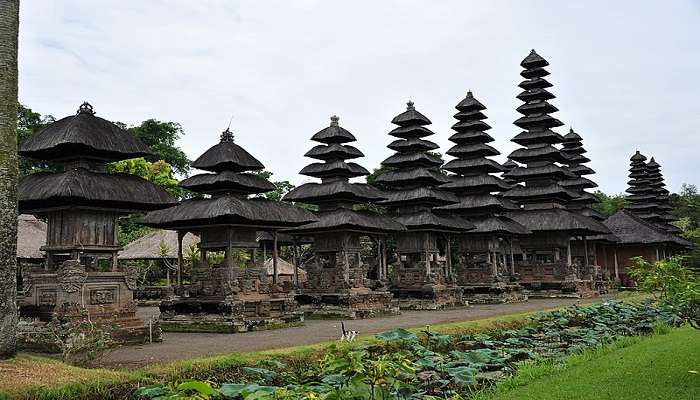
Taman Ayun Temple’s opening hours are from 09:00 AM to 05:00 PM, offering ample opportunity to explore its serene surroundings and architectural wonders. However, you should note that the temple is also closed on Nyepi Day. This crucial Hindu celebration symbolizes Bali’s “Day of Silence” and is celebrated annually as the Saka New Year calendar. For the Balinese, Nyepi is a time of spiritual and deep meditation characterized by fasting, meditating, and abstinence from various activities.
Nyepi Day impacts the opening hours of the this Temple. It runs from 6 a.m. to 6 a.m. the following morning, with strict restrictions in place to maintain an atmosphere of peace and self-reflection. As a result, most of Bali’s bustling streets are quiet, still, and noise-free because residents and tourists respect this purity. Even non-Hindus and visitors must abide by the restrictions and cannot enter public places such as beaches and roads.
Entrance Fee
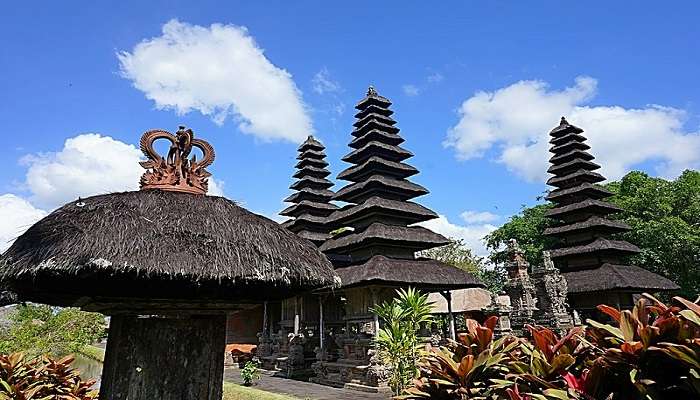
The entrance fee to Taman Ayun Temple is IDR 10,000 for local tourists and IDR 20,000 for foreigners. The fee helps protect the cultural treasure. Visitors are required to follow certain dress codes when exploring the temple. People should wear appropriate attire when visiting temples. These traditional clothes not only show respect for the sacred place but also show off the richness of Bali.
When visiting, you should respect these guidelines and embrace the spiritual significance of your visit to Taman Ayun Temple.
Further Read: Balinese Cuisines
Hope you found this Taman Ayun Temple travel guide informative and engaging. However, mere words cannot capture the true magnificence of this sacred site. It is a destination that demands to be witnessed and experienced firsthand, captivating all your senses. Escape for a spiritual experience on your next trip to Bali. Dive deep into the secrets of theTemple. Your passport to Bali’s cultural heritage is waiting for you! Here we reveal the hidden gem of ancient wonders, from relaxing lakes to sacred sites. This virtual journey through time and tradition will aid you in discovering the rich heritage and fascinating charm of the Temple. So please put on your explorer’s hat and join us on this exciting adventure!
For our editorial codes of conduct and copyright disclaimer, please click here.
Cover Image Source: Geoff Clarke for Wikimedia Commons
Frequently Asked Questions About Taman Ayun Temple
What is Taman Ayun Temple and why is it famous?
Taman Ayun Temple is a must-visit landmark when visiting this beautiful and happening island due to its well-crafted architecture, and holds an important cultural significance for the Balinese people.
Where is Taman Ayun Temple located?
The Temple in Bali is situated in the Mengwi village of Bali's Badung regency. It is approximately 18 kilometres from Denpasar and 8 kilometres southwest of Ubud making it convenient for visitors.
What is the significance of the Taman Ayun Temple?
Taman Ayun Temple is a very important landmark in Balinese culture. It was built as the family temple of the Mengwi Empire in the 17th century and now serves as a place for spiritual worship and cultural rituals.
What is Nyepi Day?
It is the 'Day of Silence' in Bali's culture which is celebrated every year as the Saka New Year. plan your visit to explore this day with your loved ones.
Can I take a guided tour of Taman Ayun Temple?
Yes, guided tours of Taman Ayun Temple are available for visitors who wish to gain a deeper understanding of its history and its architecture. Try to get the bookings done in advance to have a relaxed and hassle-free time.
People Also Read:
Sri Nageshwarnath Temple Satya Dharma Temple Bull Temple

Unveil the hidden treasures of the globe and turn every travel dream into reality. As a Content Writer, I am passionate enough to craft stories from ancient wonders to modern marvels. My words paint the picture-perfect itinerary for unforgettable experiences. Let my words be your trusted guide to immerse in the diverse culture and discover the beauty of the unknown.











